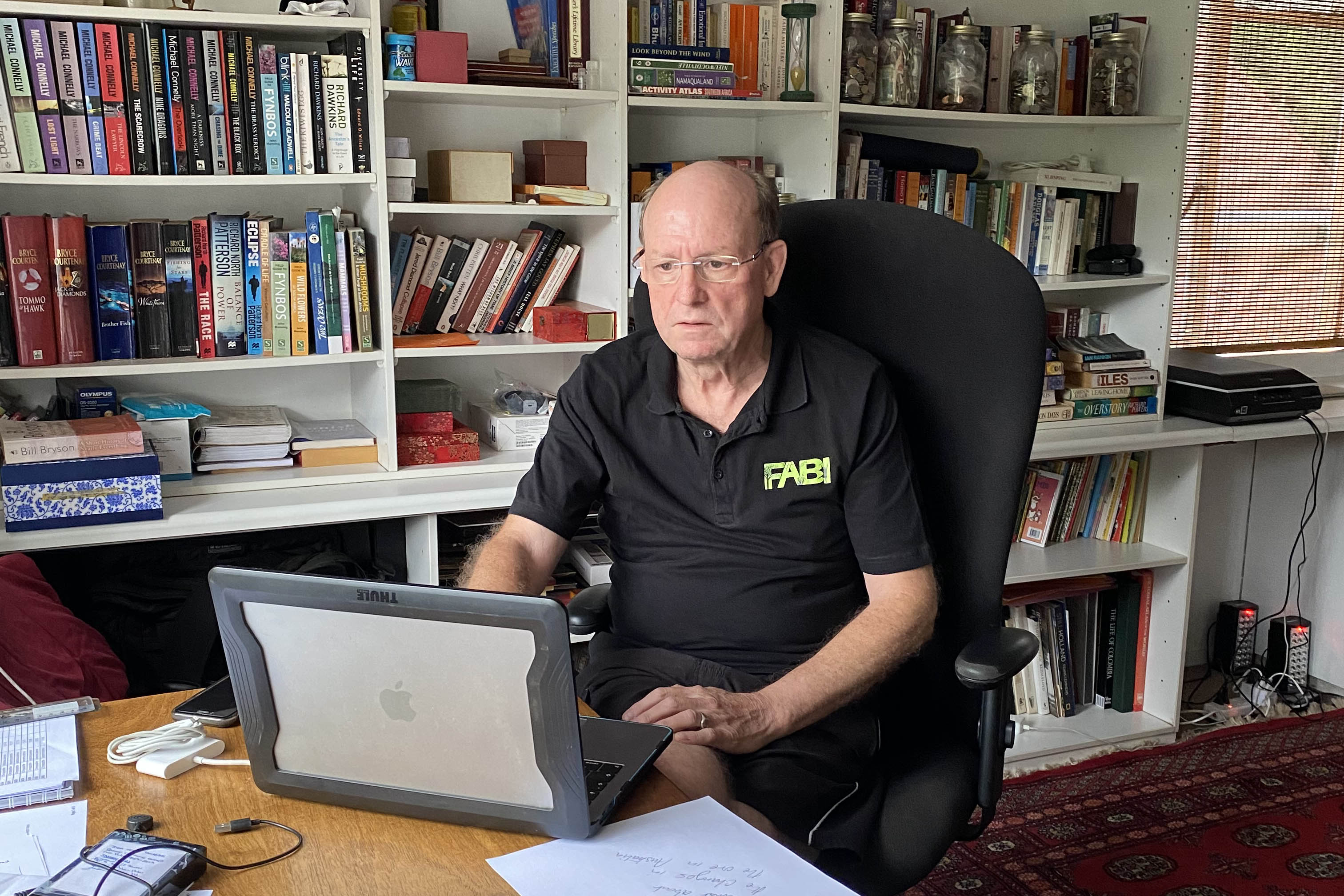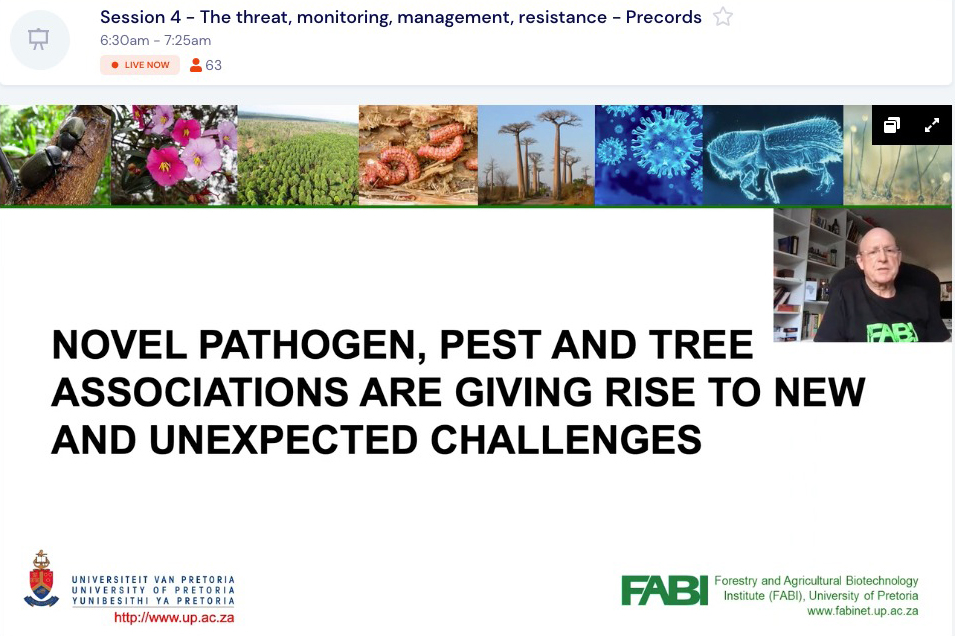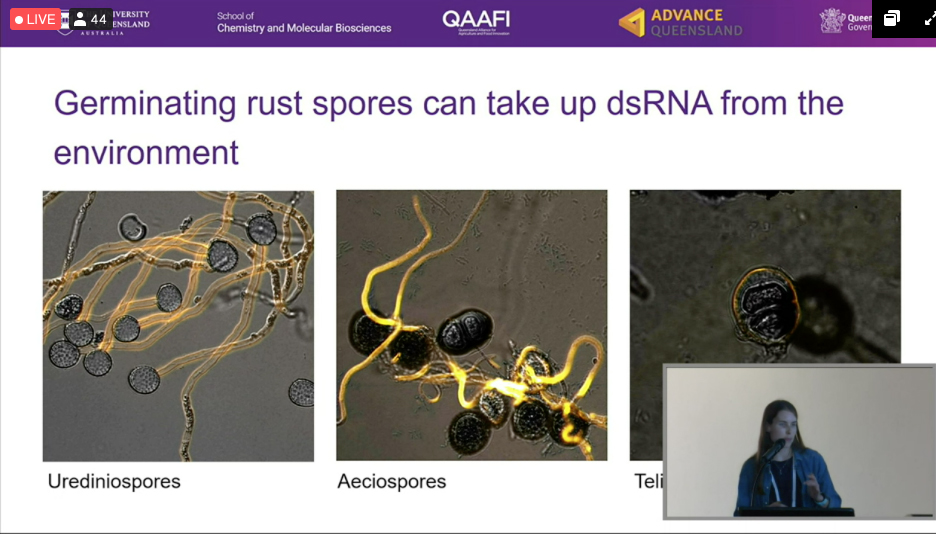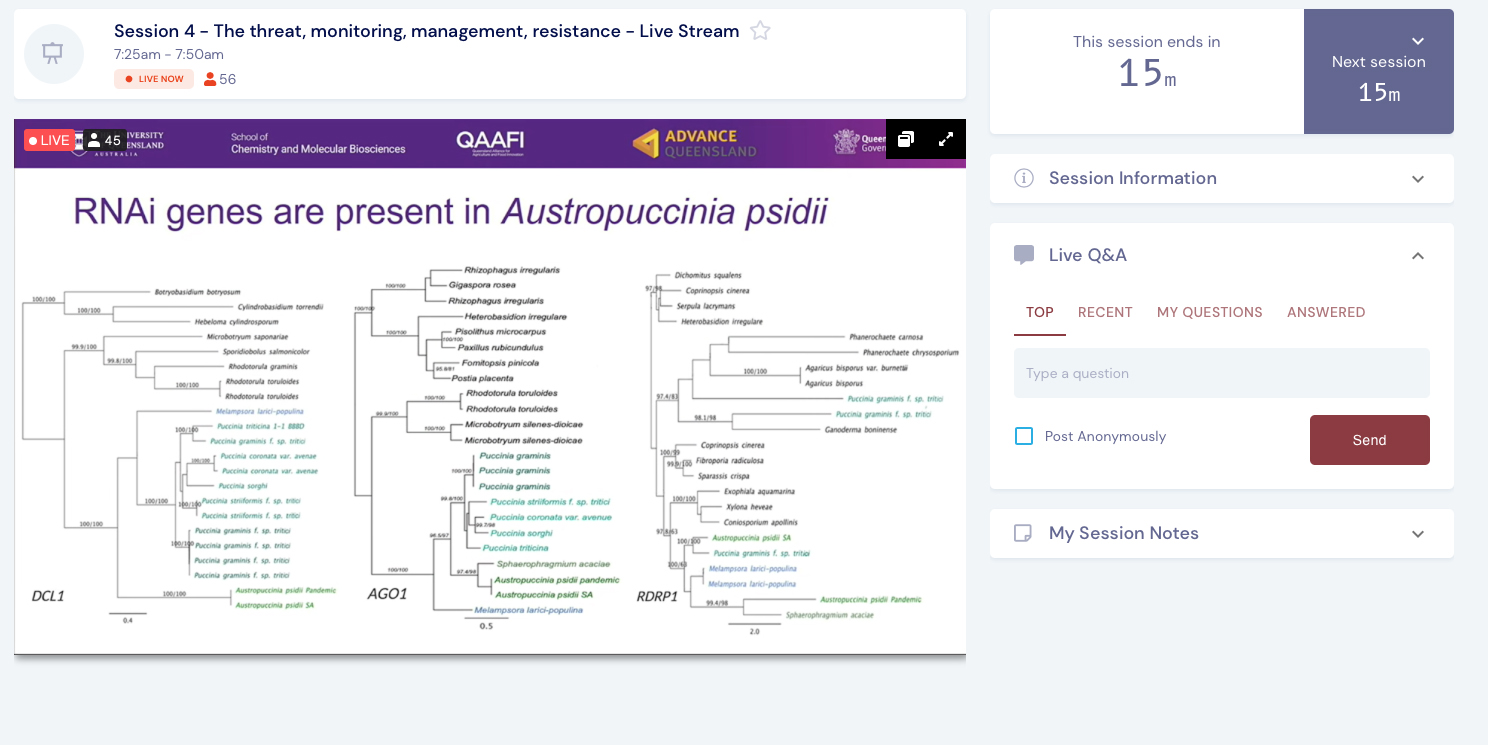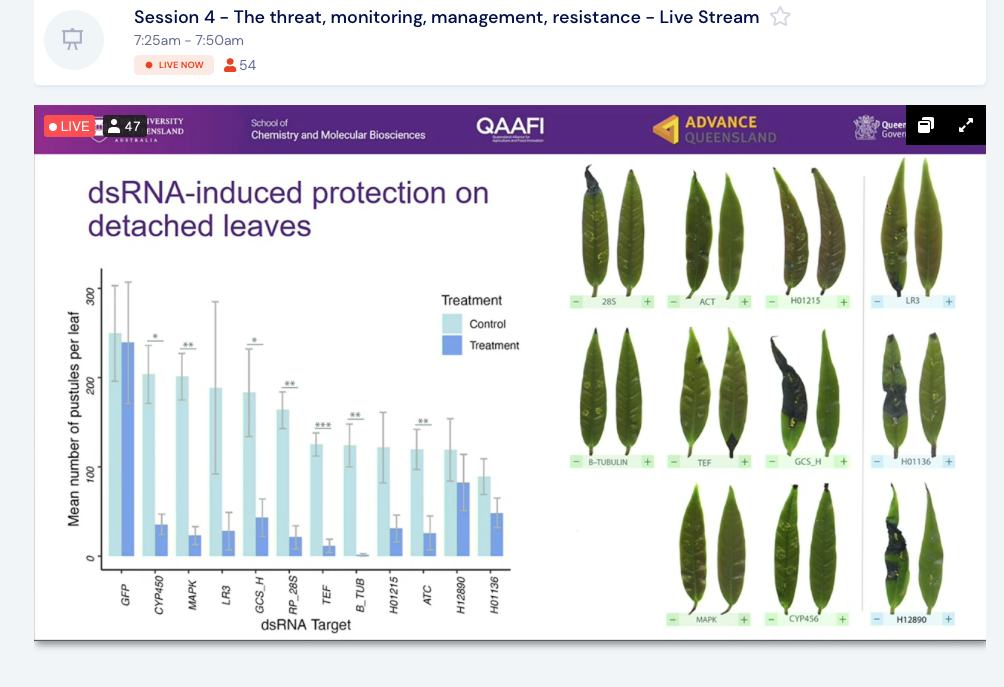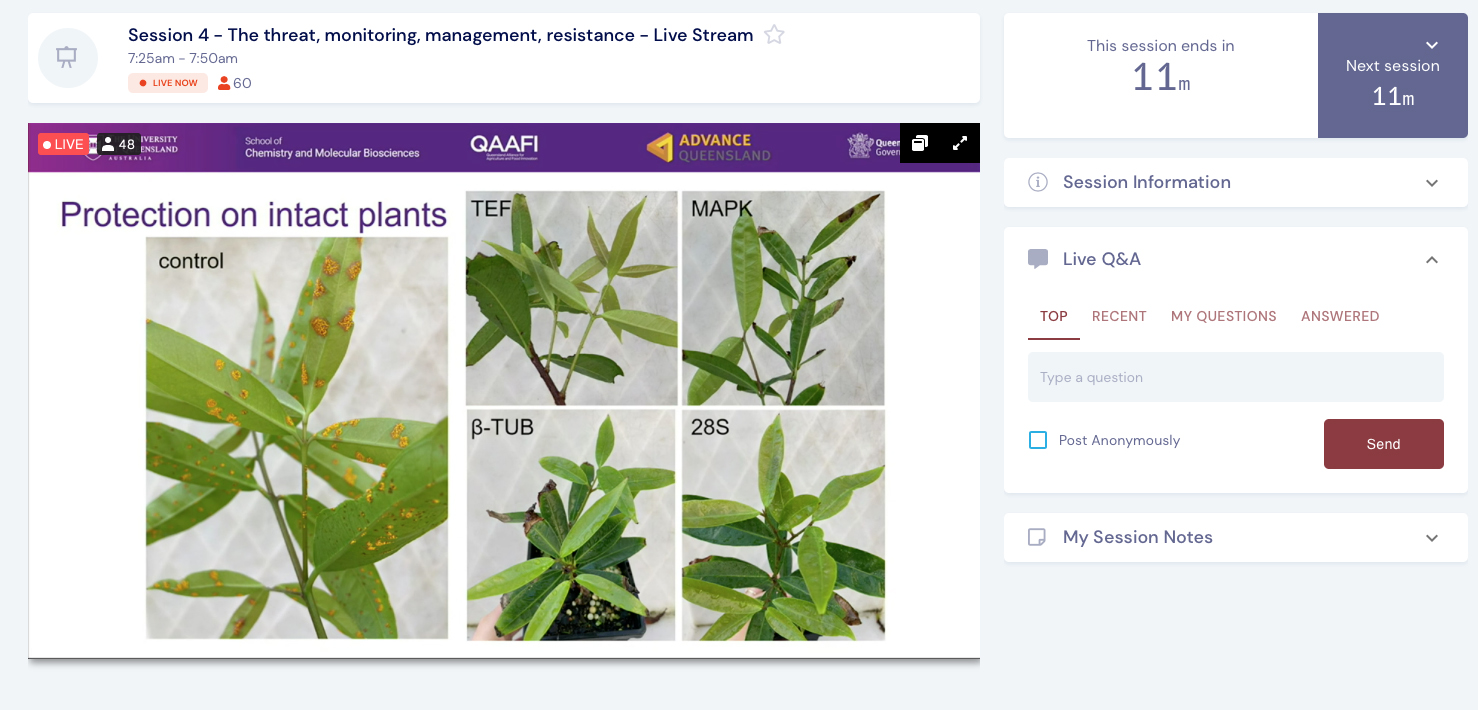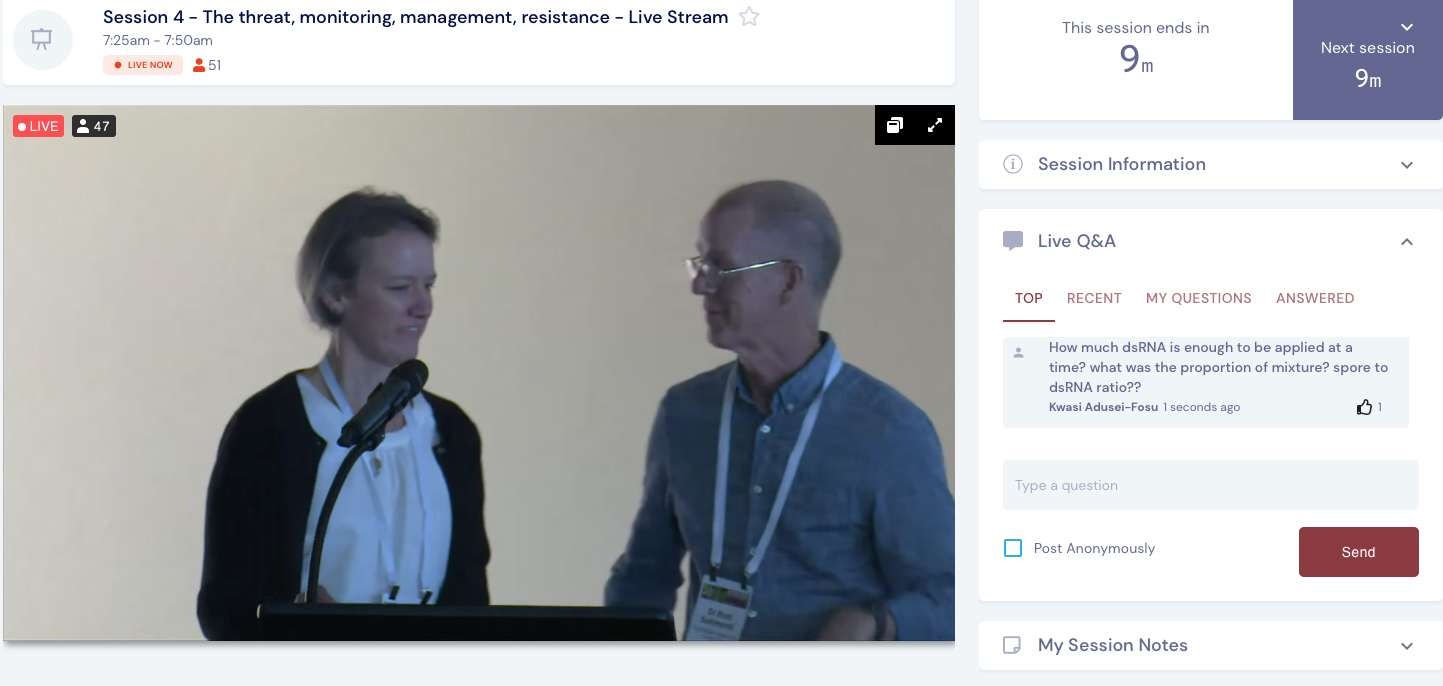Mike Wingfield participates in the Australian Myrtle Rust Symposium 2021-03-29
Some would argue that myrtle rust (to some known as Eucalyptus or guava rust) caused by Austropuccinia psidiinow competes with Phytophthora cinnamomi(the biological bulldozer) as the most important pathogen of trees in the natural woody ecosystems of Australia. During the past week, the Australian Plant Biosecurity Science Foundation hosted a “hybrid format” national symposium on myrtle rust. A small group of plant pathologists including many FABI collaborators and friends met in person at the Ballina Jockey Club on the New South Wales north coast. They were joined by a large number of colleagues in many parts of Australia as well as some in other parts of the world. Mike Wingfield, FABI Professor and Advisor to the Executive of the University of Pretoria joined the meeting to present a keynote presentation. This was intentionally not focused not on FABI’s myrtle rust work but rather to provide a global perspective on pests threatening native forests and woody ecosystems. The nine-hour time difference between South Africa and the east coast of Australia complicated opportunities for members of the FABI team to attend the symposium other than during the late afternoon session on Wednesday 24 March, but all talks have been recorded for later viewing. Commenting on the symposium and its very extensive programme Mike remarked on the “huge amount of research that is now being conducted on myrtle rust in Australia”. Also that “there is no shortage of science and scientific expertise available. But there is a great need to engage policy makers and Governments globally to assume much stronger support for groups studying the threat of forest pest - this if we have any hope of reducing their impact in the future”. He further added that “we need to be much better prepared than we currently are for the new problems that will inevitably arise in the future”.


